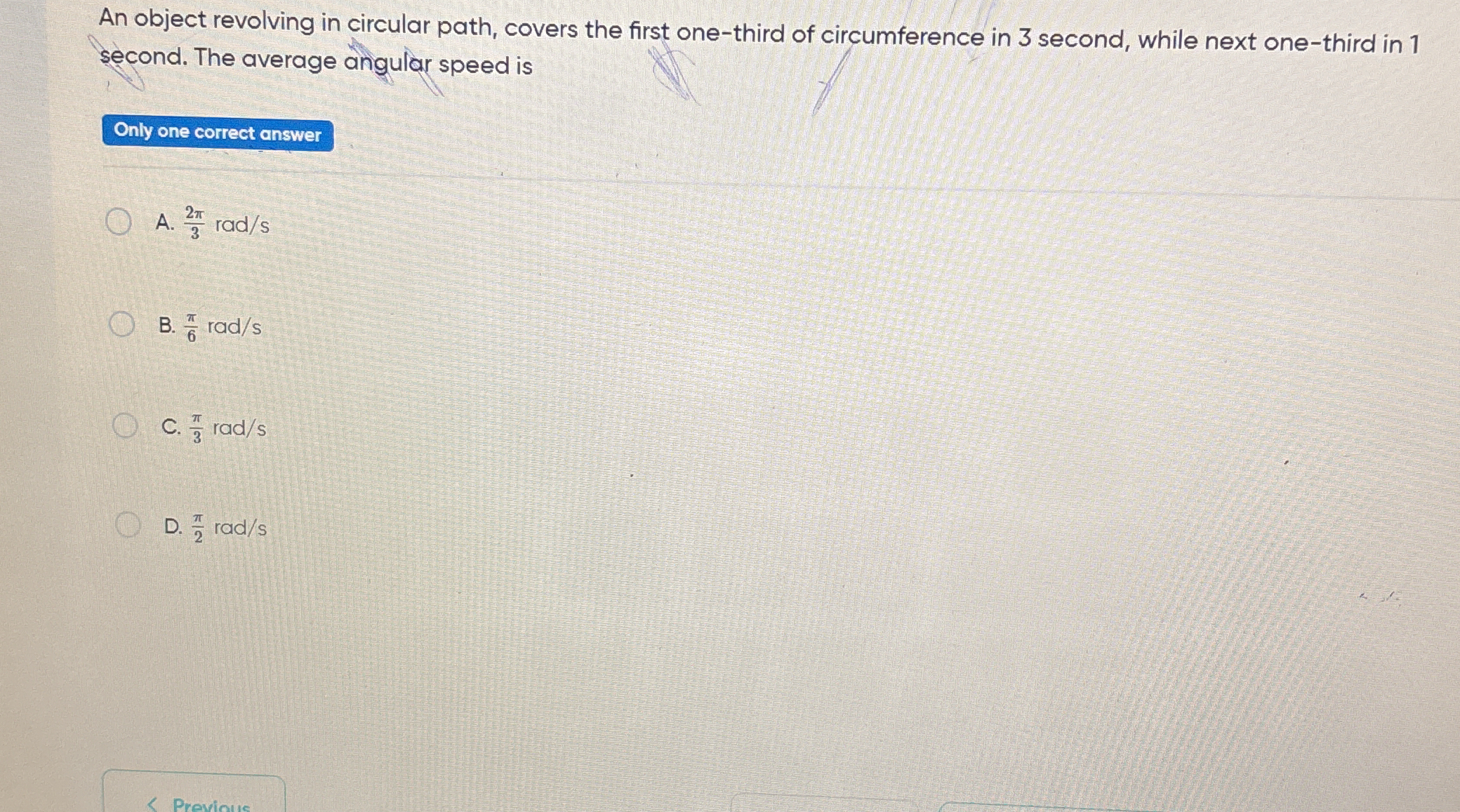An object revolving in a circular path covers the first one-third of circumference in 3 seconds, while the next one-third in 1 second. The average angular speed is?

Understand the Problem
The question is asking for the average angular speed of an object moving in a circular path, given that it covers the first one-third of the circumference in 3 seconds and the next one-third in 1 second. To find the average angular speed, we will calculate the total angular distance covered and divide it by the total time taken.
Answer
The average angular speed is \( \frac{\pi}{6} \) rad/s.
Answer for screen readers
The average angular speed is ( \frac{\pi}{6} ) rad/s.
Steps to Solve
- Calculate total angular distance covered
Since the object travels one-third of the circumference twice, the total angular distance covered is:
$$ \text{Total angular distance} = \frac{2\pi}{3} \text{ radians} $$
- Calculate total time taken
The total time taken for the two segments is the sum of the individual times:
$$ \text{Total time} = 3 \text{ seconds} + 1 \text{ second} = 4 \text{ seconds} $$
- Calculate average angular speed
Average angular speed can be calculated using the formula:
$$ \text{Average angular speed} = \frac{\text{Total angular distance}}{\text{Total time}} $$
Substituting the values:
$$ \text{Average angular speed} = \frac{\frac{2\pi}{3}}{4} = \frac{2\pi}{12} = \frac{\pi}{6} \text{ rad/s} $$
The average angular speed is ( \frac{\pi}{6} ) rad/s.
More Information
The angular speed tells us how quickly an object is moving along a circular path. In this case, the average angular speed indicates a moderate rate of revolution for the object.
Tips
- Not summing the time correctly: Make sure to add up all time segments accurately.
- Misunderstanding angular distance: It's important to recognize that we calculate angular distance in radians based on the proportion of the circumference covered.
AI-generated content may contain errors. Please verify critical information